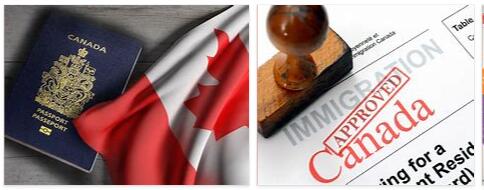- Time zone: 7 hours more than Italy
- Capital: Pago Pago (American Samoa); Hagatna (Guam); Saipan (Northern Marianas)
- Main towns: Fagagogo (American Samoa); Apra, Tamuning, Yigo, Dededo (Guam); San José, Songsong (Northern Marianas)
- Total area: 1250,7 km²
- Total population: 285,000 inhabitants approximately.
- Entry into the United States: autonomous unincorporated territories of the United States
American Samoa – Archipelago of Oceania, consisting of a total of seven islands that make up the eastern part of the archipelago of Samoa, located in the south-central Pacific. American Samoa is composed of the following islands, islets and atolls: Tutuila, 135 sq km, the Manua group, (Tau, Ofu and Olosega), Aunuu and the atolls of Rose and Swain’s. It is a territory of the United States where more than 67,000 inhabitants live, (2001). The capital is Pago Pago.
The climate is tropical humid, with annual rainfall of almost 5,000 mm and uniformly high temperatures throughout the year. Temperatures are mitigated by the sea and the southeast trade winds. Seasonal variations in temperatures are almost imperceptible.
Guam – Island country of Oceania, located in the western Pacific, in the Mariana archipelago. It is an autonomous state of Micronesia that is politically dependent on the United States of America, since it was ceded by Spain in 1898, under the provisions of the Treaty of Paris. Its capital is Hagatña.
According to acronymmonster, Guam is the largest and southernmost island of the Mariana archipelago with an approximate extension of 541.3 sq km, that is, three times the surface of Washington DC. It is a volcanic and very mountainous island on which fertile valleys rest. The north of the island is relatively lower, characterized by the presence of extensive coral plains; while to the south are the main mountains of the island, most of which are of volcanic origin. Near the port of Apra are the Cabras Island and to the south-west, facing the city of Merizo, are the Cocos Islands. To the south-east of the island is the Mariana trench, the deepest submarine trench of the oceanic crust,
The climate is tropical, with rainfall over 2,400 mm per year and high and uniform temperatures throughout the year. Typhoons, common in the Pacific region, often sweep the shores of Guam and cause severe damage to buildings and crops.
Baker Islands, Howuland, Jarvis – Howland Island Baker Island and Jarvis Island are three small coral islands, each of about 2.6 square kilometers in area, belonging to the group of islands of the Linea or Equatorial Sporades in the central Pacific. All are administered directly by Washington as non-incorporated territories of the United States.
Johnston Atoll– Johnston Atoll, located in the North Pacific 1,151 km southwest of Honolulu, consists of two islands, Johnston and Sand, with a total land and water surface of approximately 2.6 square kilometers. The islands are enclosed by a semicircular cliff. It was discovered by British sailors in 1807.
Midway – Atoll located in the North Pacific, approximately 1,920 km northwest of Honolulú, Hawaii.
The Midway archipelago is an atoll of coral origin formed by two small islets Eastern and Sand, and has an external barrier of 30 km of reefs. Midway’s climate is tropical and around 2,000 people live there permanently, mostly American soldiers. In 1867 there was the formal incorporation of the archipelago to the United States and also its baptism as the Midway Islands which refers to its intermediate situation between North America and the Asian Pacific coast, midway means in English halfway. In the Second World War, it was the scene of a crucial naval and air battle between the armies of Japan and the United States,
Northern Mariana Islands – The Northern Mariana Islands archipelago consists of a total of 14 volcanic islands are the emerged part of an underwater mountain range, which stretches from north to south for about 750 km and is part of the famous Pacific Ring of Fire. The northernmost islands are completely volcanic, while those located to the south are coral formations that have overlapped the volcanic substrate.
The highest point is located on the island of Agrihan, where it reaches 965 m above sea level. The climate is tropical, with high temperatures throughout the year although they are a little cooler between the months of December to May. Hurricanes are very frequent throughout the archipelago.
Palmyra Atoll– Palmyra, is an atoll in the central Pacific, formed by 50 islets with a total area of about 10 sq km, is located about 1,600 km southwest of Honolulu. It was discovered in 1802 by the USS Palmyra, and formally annexed to the United States in 1912, placed under the jurisdiction of the city of Honolulu until 1959, when Hawaii became the 50th state of the United States. The atoll is privately owned.
Wake Island– Wake is an atoll located between Guam and Midway, and consists of three coral islets, Wake the largest, and Wilkes and Peale that emerge above a submerged volcano. The climate is tropical and rainfall is very scarce. In the atoll live the workers of the aerial installations that the United States maintains on the island whose number varies between 2,000 and a few hundred. Its growing importance as a stopover for air routes between America and Asia was the reason why it came under the control of the United States Air Force, which continued the management of the territory in the mid-nineties.


